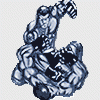Napisano Ponad rok temu
Re: Porównanie i ewentualne przewagi BJJ nad Sambo.
WINNING THE SPORT SAMBO MATCH
A match can be won in one of several ways:
1. Total Victory (a "perfect throw" or submission hold) which ends match immediately;
2. Technical Superiority (12 point difference in score), which ends match immediately;
3. Point difference at end of match duration. If there has been no Total Victory or Technical Superiority, the sportsman with the most points at the end of the match wins - no minimum point score required. Tie matches are decided by a one minute overtime period, or if there is no winner at the end of overtime, by majority decision of the officials.
ILLEGAL HOLDS IN SPORT SAMBO
Holds not permitted in Sambo include:
1. bending arms behind back (hammerlock or chicken wing);
2. submission on shoulder, wrist, neck, fingers or toes;
3. gripping the mat or the opponent below the belt or inside the sleeve;
4. pressure to the face;
5. twisting or squeezing the opponent's head;
6. punching or slapping;
7. driving the opponent's head into the mat;
8. standing or throwing submission holds;
9. gouging;
10. strangling or choking holds.
SCORING IN SPORT SAMBO
1. Hold Down: (Immobilization or Predicament)
Similar to a judo hold down or a long wrestling near fall. One sportsman must hold the back of the other sportsman toward the mat in a danger position (less than 90 degrees), with chest, side or back in unbroken contact with the chest of the opponent to score. A hold down is "broken" when contact between the athletes is broken when space is created between them, or the defending athlete turns over to the stomach or the side with an angle greater than 90 degrees. A Hold down may only be scored once in a match and will earn either 2 points for a ten second hold down or 4 points for a twenty second hold down. Once a hold down is scored, a sportsman cannot attempt
2. Submission Hold:
A pressure hold (arm or leg lock) applied ot the arm or leg of the opponent which makes the opponent surrender or submit by calling out or by tapping the mat at least twice. Submission holds cannot be applied in standing position. A submission hold ends the match.
3. Throw:
A throw is scored anytime one sportsman takes another to the mat in a single, continuous and uninterrupted action. A Sambo throw is more than a simple wrestling takedown, however. Like a judo or Greco-Roman throw, it must start with both sportsmen on their feet, one sportsmen must unbalance the other and take the opponent directly to the mat with one action without stopping. A throw must knock the defender off their feet either by lifting or tripping them, not merely dragging them down. A throw is scored based on two factors: How the thrown athlete lands and whether the thrower remains standing (scoring twice as many points if remaining standing). A Perfect Throw results in Total Victory and stops the match when a sportsman throws the other to his back while remaining standing. Other throws will score 4 points, 2 points, or 1 point, depending on the impact point of the thrown athlete. COMBAT SAMBO Combat Sambo has three main styles, each according to a particular founder: Spiridonovan-Style (or "Old Style" also known as SAM or SAMOZ), Oshchepkovan-Style and Kharlampievan-Style.
Widac roznice miedzy przepisami Bjj a Sambo. Sambo silnie punktuje rzuty i za nie mozna dostac najwiecej (4,2,1). Trzymac przeciwnika mozna tylko raz w walce za maks 2(1) pkt. Tak wiec za duzo punktow dostac na ziemi nie mozna. Jak to ktos powiedzial wszystko albo nic w parterze.
Patrzac na przepisy sambo jest w pewnym sensie odwrotnoscia Bjj a bardziej zblizone jest filozofia do judo. Jest rzut na ippon konczacy walke. W parterze jest trzymanie. Nie wiem co z limitem czasowym. Bez watpienia mozna wiecej na ziemi i tutaj jest przewaga Sambo nad Judo.
Ze zawodnicy Sambo dobrze sobie radza na zawodach JJ i Bjj to nie musze nikogo przekonywac.
Aha i jeszcze jedna rzecz. Za 2 zasadnicze odmiany Sambo. Sambo sportowe o ktorym pisze i sambo combat w ktorym wystepuja uderzenia.

 FaceBook
FaceBook








